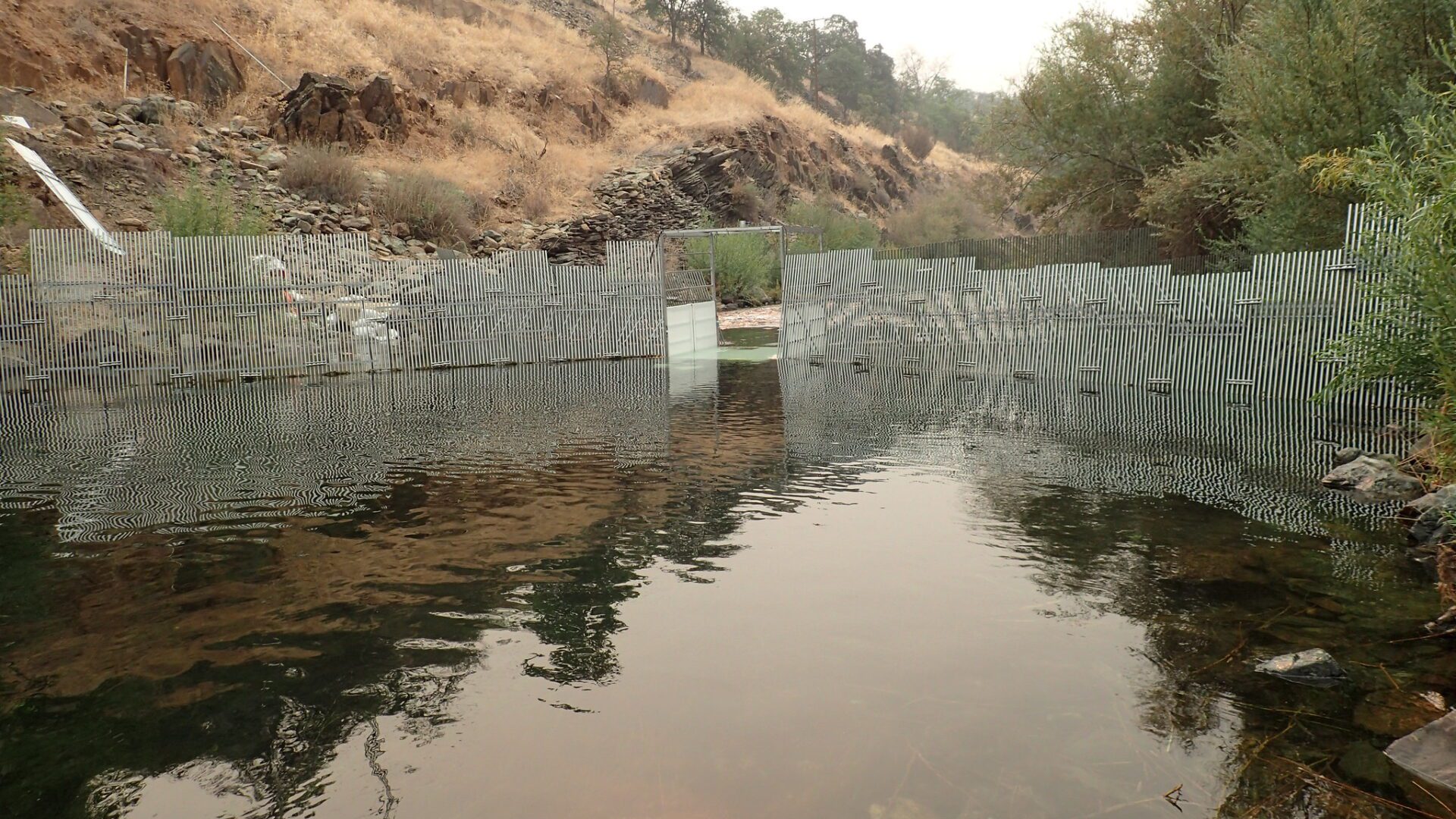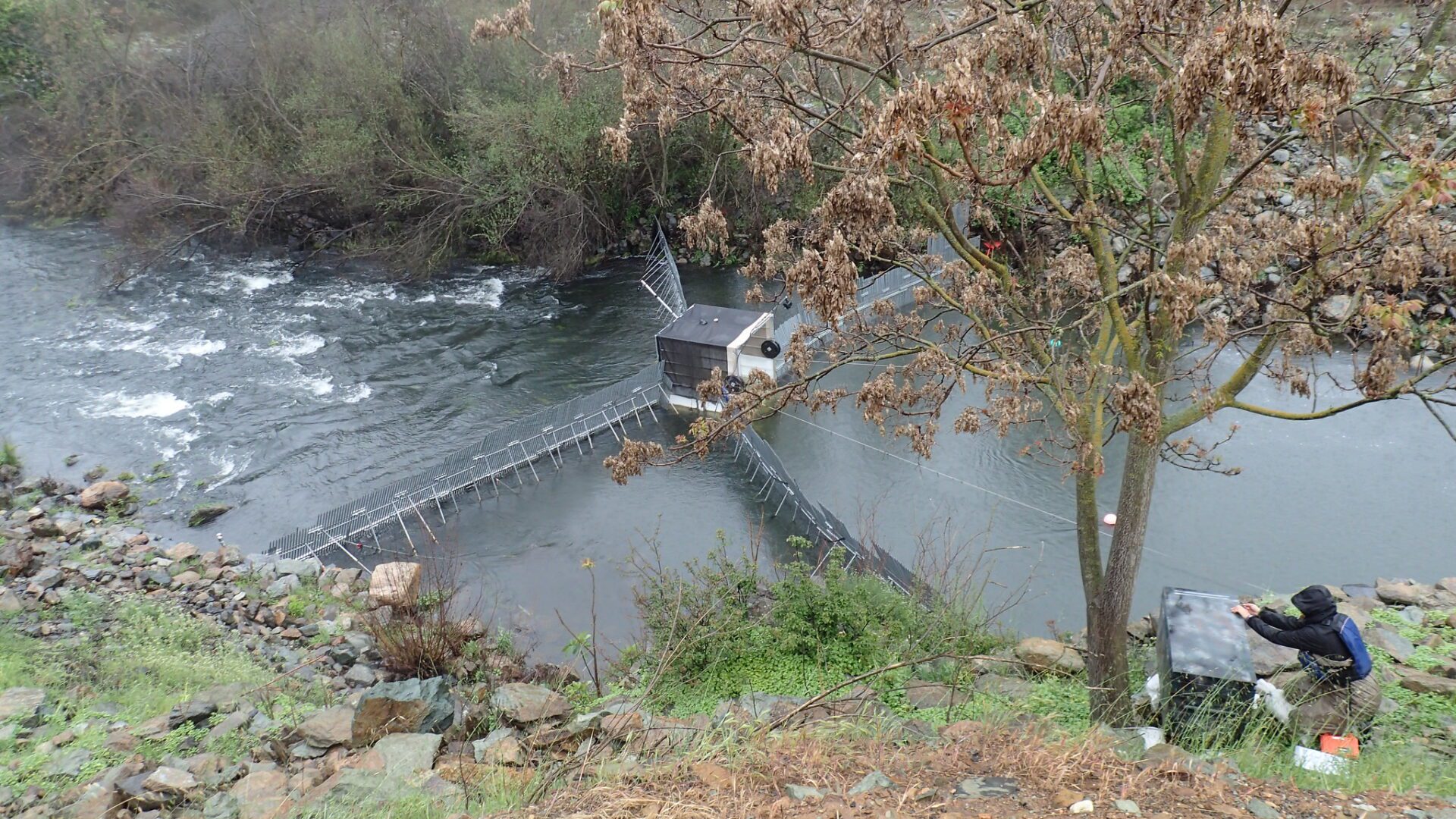


FISHBIO constructed and monitored two fish counting weirs in 2015 and 2016 as part of the Federal Energy Regulatory Commission (FERC) relicensing process on the lower Tuolumne River. The purpose of this project was to evaluate the impact of La Grange Diversion Dam and the La Grange powerhouse as barriers to the upstream migration of adult fall-run Chinook salmon and steelhead. This included documenting the proportion of the Tuolumne River’s fall-run Chinook salmon population that migrates upstream to these facilities, and evaluating potential impacts to the spawning of these fish.
The project consisted of two video monitoring weirs installed in the tailrace and main channel directly below the upstream migration barriers. Each weir structure consisted of rigid weir panels that directed fish through a passage chute from both upstream and downstream directions. Each passage chute was equipped with an overhead camera to detect fish passage, underwater cameras for species identification, and an infrared lighting system for 24-hour monitoring. A multi-camera video surveillance application was used to route footage to computers for storage, with hourly files from each camera saved to external hard drives.

Staff made daily site visits to clean the weirs, download video footage, and collect environmental data. Visual assessments were also conducted daily to ensure that fish were not stacking on either side of the weir. Video recordings were reviewed to determine daily upstream and downstream weir counts as well as the total number of individual Chinook and steelhead moving through the weir. The total number of individual Chinook salmon identified at the tailrace and main channel weirs was divided by the total number of adult salmon documented entering the Tuolumne River at a lower fish counting weir to estimate the proportion of fall-run Chinook that migrate upstream to the La Grange facilities.



